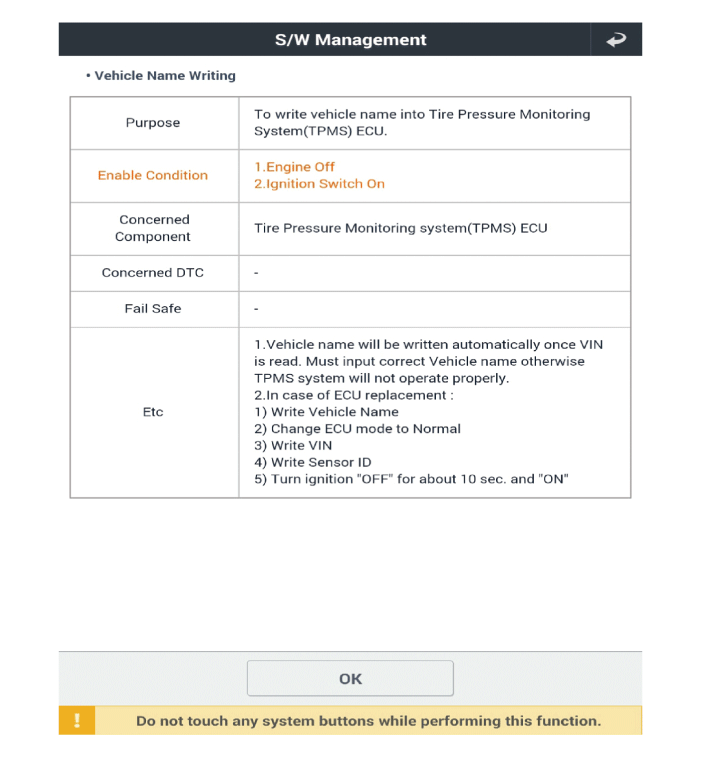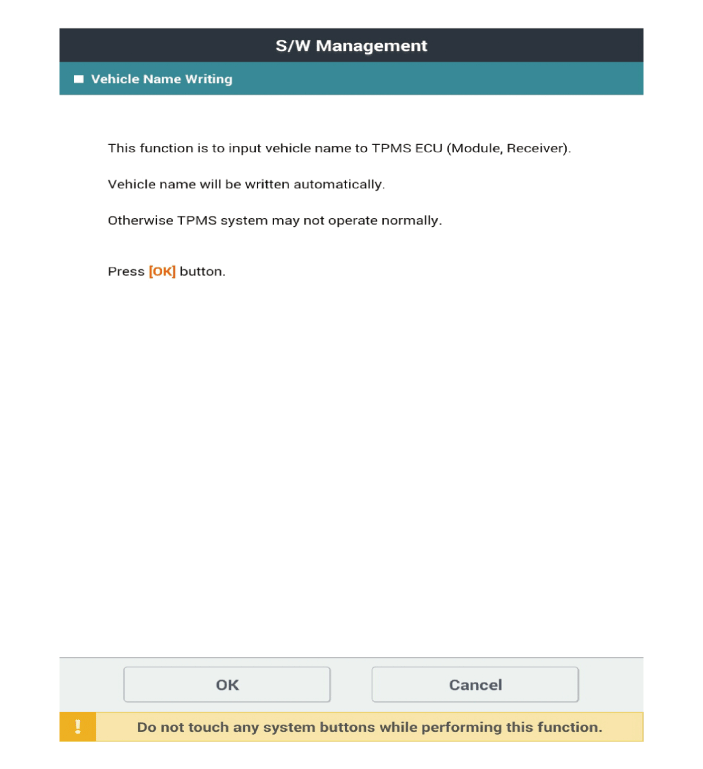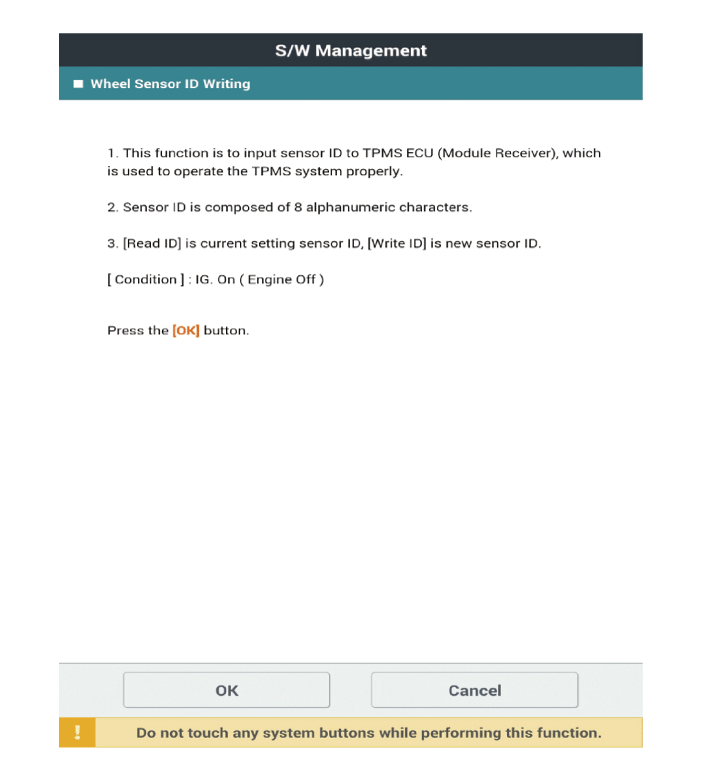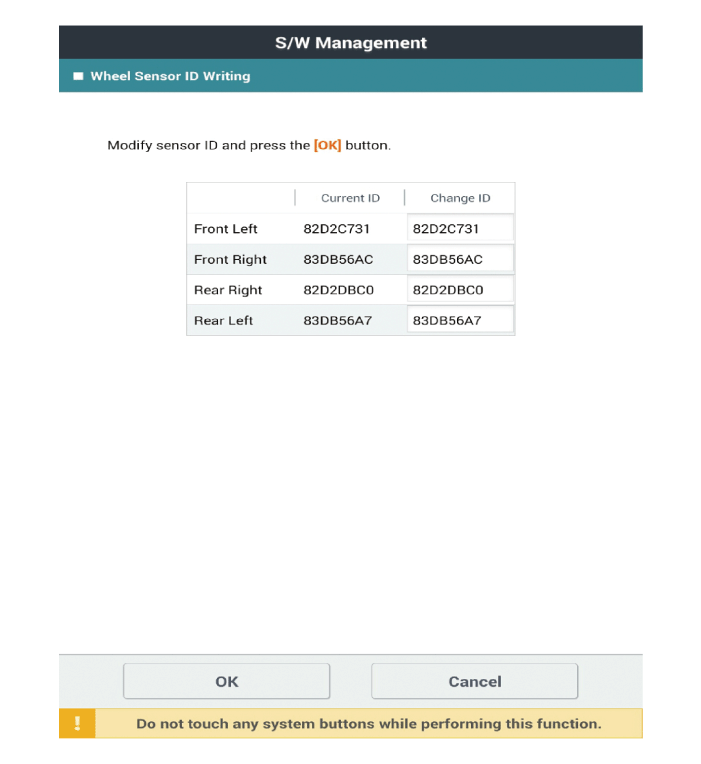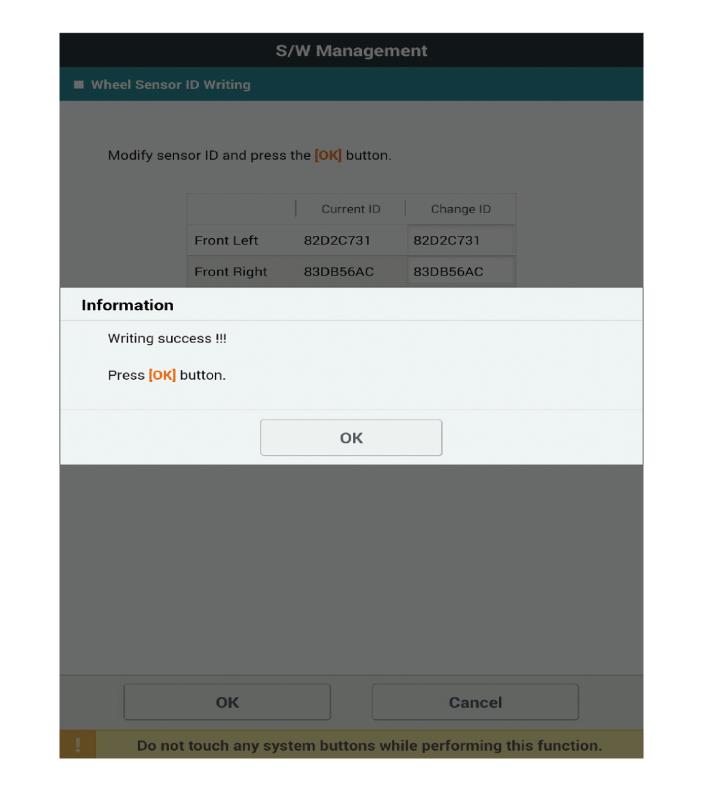Kia Optima: Tire Pressure Monitoring System / TPMS Receiver
Description and operation
| Description |
TPMS Receiver : IBU (Integrated Body Control Unit) integrated management

| 1. |
Mode
|
| 2. |
Overview
|
| Operation |
| 1. |
General Function
|
| 2. |
General Conditions to Learn New Sensors :
|
| 3. |
General Conditions to Un-Learn a sensor that is removed :
|
Repair procedures
| Removal |
| 1. |
Remove the Integrated Body Control Unit (IBU). (Refer to Body Electrical System - "Integrated Body Control Unit (IBU)") |
| Installation |
| 1. |
Install in the reverse order of removal. |
| Diagnosis With KDS |
Vehicle Name Writing
The main contents of diagnostic method using diagnostic device are as follows:
| 1. |
Connect self-diagnosis connector (16 pins) located in the lower driver side crash pad to self-diagnostic device, and then turn on the self-diagnostic device after key is ON. |
| 2. |
Select the "IBU-TPMS" and "Vehicle Name Writing" on KDS vehicle selection screen, then select OK.
The vehicle naming (Read/Write) is automatically typed and just select the vehicle's option in the selection tab below. ※ The vehicle naming code is different as the vehicle models
|
Wheel Sensor ID Writing
The main contents of diagnostic method using diagnostic device are as follows:
| 1. |
Connect self-diagnosis connector (16 pins) located in the lower driver side crash pad to self-diagnostic device, and then turn on the self-diagnostic device after key is ON. |
| 2. |
Select the "IBU-TPMS" and "Wheel Sensor ID Writing" on KDS vehicle selection screen, then select OK.
|
 TPMS Sensor
TPMS Sensor
Description and operation
Description
1.
Function
•
By detecting the pressure, temperature, acceleration, and battery
condition, tra ...
 Steering System
Steering System
Service data
Service Data
Item
Specification
Type
Electric Power Steering System
Steering gear
Type
...
Other information:
Kia Optima DL3 2019-2025 Service and Repair Manual: Rear Stabilizer Bar
Repair procedures Removal 1. Disconnect the (-) battery terminal. 2. Loosen the bolt and nut (A) and then disconnect the rear stabilizer link from the rear lower arm. Tightening torque : 58.8 - 68.6 N.m (6.0 - 7.0 kgf. ...
Kia Optima DL3 2019-2025 Owner's Manual: Engine compartment fuse replacement
1. Turn the ignition switch and all other switches off. 2. Remove the fuse panel cover by pressing the tab and pulling the cover up. 3. Check the removed fuse; replace it if it is blown. To remove or insert the fuse, use the fuse puller in the engine compartment fuse panel. 4. Push in a new f ...

